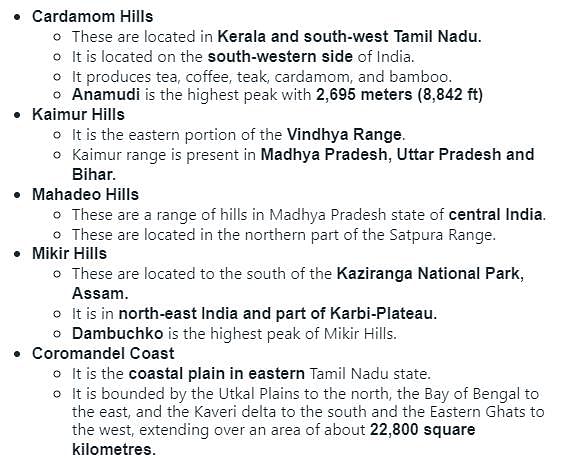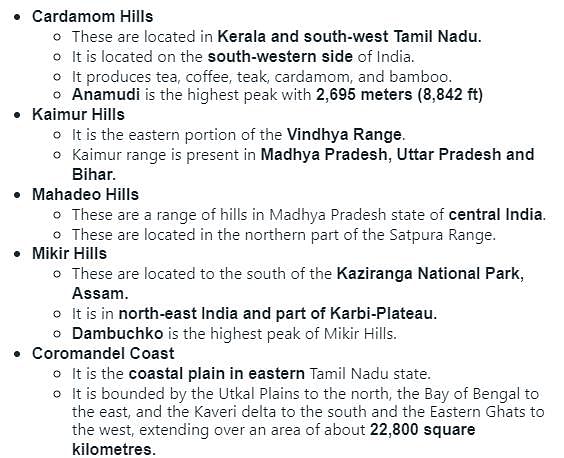Test: Basics about India - UPSC MCQ
30 Questions MCQ Test - Test: Basics about India
Consider the following statements about our country India:
I. India has an area of about 3.28 million sq. km.
II. India is located in the south-eastern hemisphere.
III. The latitudinal extent of India is 8°4’N and 37° 6’N latitudes.
IV. The longitudinal extent of India is 68°7’E and 97° 25’ E longitudes.
Of these statements:
Which one of the following is the wettest place in India?
| 1 Crore+ students have signed up on EduRev. Have you? Download the App |
Match List-I with List-II and select the correct answer from the codes given below:


As per geological periods the correct sequence of order of the following is
1. Aravali
2. Himalayas
3. Deccan plateau
4. Eastern Ghat
Codes:
Which of the following divides India into northern and Southern parts?
With which one of the following countries, India shares the maximum length of the border?
The hill station of Coonoor is located in which one of the following states?
Ans. d
Which one of the following longitudes determines the Indian standard time?
Consider the following places of Kashmir region
(1) Sri Nagar
(2) Gilgit
(3) Kargil
(4) Banihal
Arrange the above place from North to South using the code given below
Consider the following statements:
1. Rajmahal highlands consist of lava flow deposits.
2. Bundelkhand gneiss belong to the oldest Archaean rocks of India.
Which of the statements given above is/are correct?
In how many districts of Uttarakhand the Greater Himalaya is spread over?
Consider the following statements—
-
Himalayan mountain chain was part of Laurasia or Angaraland geological divisions.
-
Peninsular India was part of Gondwanaland of Geological divisions.
Select the correct answer from the following codes:
With reference to the wetlands of India, consider the following statements—
1. The Country’s total geographical area under the category of wetlands is recorded more in Gujarat as compared to other states.
2. In India, the total geographical area of coastal wetlands is larger than that of inland wetlands.
Which of the statements given above is/are correct?
If you travel by road from Kohima to Kottayam, what is the minimum number of States within India through which you can travel, including the origin and the destination?
Match List-I with List-II and select the correct answer using the codes are given below.
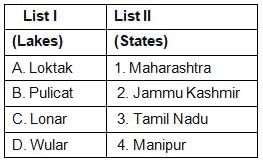
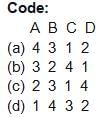
Match List-I with List-II and select the correct answer using the code given below the Lists :

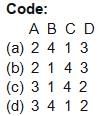
Which one of the following lakes in India has the highest water salinity?
Which of the following pairs is mismatched in relation to the location of Lakes in India?
The ‘Gurudongmar Lake’ named after Guru Padmasambhava is one of the highest lakes in the world. It is situated in the Indian State of—
Which one of the following pairs is not correctly matched?
Dam/ Lake — River
The Yamuna river originates from ................. glacier.


